Stretching out southward, the turret in southeast corner measures 8.4 meters in length and 11.7 meters in width. Above the turret stands a rebuilt Zhongxuan Tower.
Xiangyang features a well-conceived chessboard-styled layout, with Cross Street as heart, North Street and South Street constituting central axis, East Street and West Street extending along opposite directions. Some relics with typical ancient architectural elements, including Green Screen Wall, Pond beside State Confucius Academy, Dacheng Hall of County Confucius Academy, Watchtower, Shan Mansion, Shan Family’s Ancestral Hall and some other Qing-dynasty buildings, are still kept in Xiangyang City.
Historical events of Xiangyang
Xiangyang took shape in Han Dynasty (202—220), under the governance of Liu Biao, the top official in Jingzhou, at the end of Han Dynasty.
In 5th Year of Qiandao in the Southern Song Dynasty (1169), city walls of Xiangyang was under maintenance.
In 8th Year of Chunxi in the Southern Song Dynasty (1181), city and life-saving embankments were built for flood-control and invasion-defense purpose.
During Yuan Dynasty (1271—1368), Xiangyang was deteriorated.
In 1st Year of Hongwu in Ming Dynasty (1365), Deng Yu, a military officer under the command of Emperor Hongwu, was assigned to guard Xiangyang. Under Deng’s organization, Xiangyang was under renovation and expanded in northeast corner. The newly-added part started from old North Gate and run eastwards via Long Gate and then went southwards.
In 11th Year of Zhengde (1516), Han River flooded Xiangyang for a distance over 30 zhang. Inspector Nie Xian donated his salary as maintenance fund to repair four city gates and reinforce city gates with iron.
In 4th Year of Wanli (1567), Wan Zhensun, Magistrate of Xiangyang then, inscribed “Yangchun” for East Gate, “Wenchang” for South Gate, “Xicheng” for West Gate, “Gongchen” for Big North Gate, “Linhan” for Small North Gate, and “Zhenhua” for Long Gate.
In 14th Year of Chongzhen (1657), the insurrectionary army under the Zhang Xianzhong damaged Xiangyang’s battlement and gate tower. Soldiers under the supervision of Yuan Jixian restored the battlement to its original look. Censor Wang Yongzuo had six gate towers and Lion Pavilion located in southeast corner of Xiangyang rebuilt.
In the 5th Year under the reign of Emperor Shunzhi (1648), Censor Zhao Zhaolin and Vice Director Su Zonggui rebuilt gate tower for West Gate; Magistrate Ji Ruxi restored gate tower for South Gate; Deputy Magistrate Xu Tengmao and Zhang Zhongchong rebuilt gate tower for Big North Gate and Small North Gate; and Magistrate Dong Shangzhi rebuilt gate tower for East Gate.
During the years under the reign of Emperor Yongzheng, Vice Governor Zhao Hong’en rebuilt Zhongxuan Pavilion in the southeast corner of Xiangyang.
In 6th Year of Daoguang (1826), six gate towers were rebuilt.
In 6th Year of Xianfeng (1854), seventy-four barracks were built.
In 2nd Year of Tongzhi (1863), Madam Wall was overhauled.
In 1939, Japanese invaders bombed Xiangyang savagely. City wall south to West Gate and west to South Gate together with West Gate, South Gate Barbican and gate tower were dismantled to make way to evacuate local residents.
 |  |

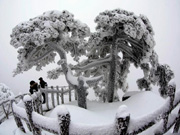 Rime scenery in Mount Huangshan
Rime scenery in Mount Huangshan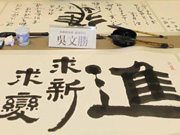 'Jin' named the word of the year by cross-strait netizens
'Jin' named the word of the year by cross-strait netizens PLA elite units unveiled
PLA elite units unveiled 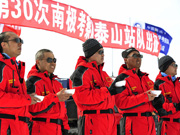 Chinese scientific expedition goes to build new Antarctica station
Chinese scientific expedition goes to build new Antarctica station Record of Chinese expressions in 2013
Record of Chinese expressions in 2013 Chinese naval escort fleet conducts replenishment in Indian Ocean
Chinese naval escort fleet conducts replenishment in Indian Ocean Weekly Sports Photos
Weekly Sports Photos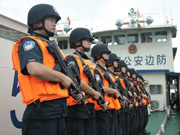 17th joint patrol of Mekong River to start
17th joint patrol of Mekong River to start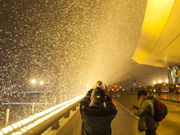 Spring City Kunming witnesses snowfall
Spring City Kunming witnesses snowfall China's moon rover, lander photograph each other
China's moon rover, lander photograph each other Beijing tenants
Beijing tenants  China's aircraft carrier carrys out 1st docking manoeuver in Sanya
China's aircraft carrier carrys out 1st docking manoeuver in Sanya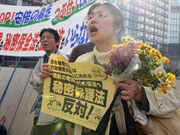 Japanese stage protest against secrecy bill
Japanese stage protest against secrecy bill
Day|Week|Month